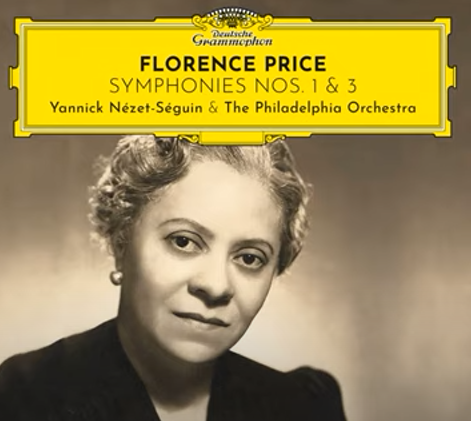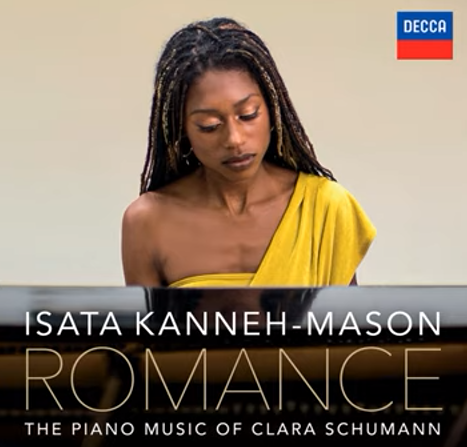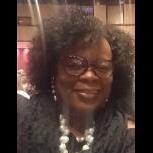-
Posts
2,380 -
Joined
-
Last visited
-
Days Won
90
richardmurray's Achievements
Single Status Update
See all updates by richardmurray
-

Clara Schumann and Florence Price Get Their Due at Carnegie Hall
Two works by these composers have been marginalized in classical music, but they were never forgotten, as their histories show.By Sarah Fritz and A. Kori Hill
Oct. 27, 2022
Two composers marginalized by history will take center stage at Carnegie Hall this week.On Friday, the Philadelphia Orchestra will perform Florence Price’s Symphony No. 3 and Clara Schumann’s Piano Concerto, which is making its Carnegie debut with Beatrice Rana as the soloist 187 years after its premiere.
Yannick Nézet-Séguin, the Philadelphia ensemble’s music director, called the concert, which sandwiches those two pieces between classics by Ravel, an example of varying artistic perspectives. “A work of art is a viewpoint from an artist,” he said in an interview. “And if you have only one part of society that always gets their viewpoint heard, we constantly hear one viewpoint. It’s so important to have different viewpoints.”
As a result of rediscoveries and shifting approaches to programming, works by Schumann and Price have migrated to classical music’s mainstream in recent years, with attention from major orchestras, especially Philadelphia, and recordings on prestige labels like Deutsche Grammophon. But they were never truly forgotten, as their histories show.
Schumann: Piano Concerto in A minor
In 1835, the piano concerto by Schumann (then Clara Wieck, not yet married to the composer Robert Schumann) premiered at the Gewandhaus in Leipzig, Germany, under the baton of Felix Mendelssohn. She was just 16, but already famous as a composer and virtuosic performer. The work earned ovations, and later, the Viennese demanded three performances in one season. But after Robert Schumann’s journal, Neue Zeitschrift für Musik, among others, reviewed it as a “lady’s” composition, she shelved it.
The concerto’s second edition didn’t come about until 1970, according to Nancy B. Reich’s biography “Clara Schumann: The Artist and the Woman.” (The pianist Michael Ponti is believed to have made the first recording in 1971.) Decades of work by musicians and musicologists culminated in Schumann’s widely celebrated 200th birthday in 2019. But despite new recordings by Ragna Schirmer and Isata Kanneh-Mason, who recently debuted the concerto with the Baltimore Symphony and the Los Angeles Philharmonic, major orchestras, including the New York Philharmonic, continue to ignore it.
Some artists have shrugged off the concerto, which Schumann completed when she was 15, as the work of a teenager. But it has had a long-ranging influence on some of the most beloved piano concertos that came after it.
“It was written at a pivotal point in the history of the genre,” Joe Davies wrote in “Clara Schumann Studies,” published by Cambridge University Press last year. “It invites a powerful reimagining of what the concerto can be and do. Stylistically and expressively, she put her own stamp on the genre.”
In an interview, Rana, who called the concerto “a genius work in many ways,” said: “I think that it’s very, very underestimated — the intellectual value of this concerto in the history of music.” Schumann’s nontraditional, through-composed form, seamless without breaks between movements, Reich has noted, bears the influence of Mendelssohn’s First Piano Concerto. Rana called it as revolutionary as concertos by Liszt and Robert Schumann, both of which it predates by over a decade.
The concerto’s powerful march opening, deceptively simple in its orchestral unison, contains the five-note motif that unites the themes across its three movements. In its transformative second movement Romanze, a tacit orchestra listens to the piano sing an exquisite love duet with a solo cello — an instrument that both Robert Schumann and Brahms featured in their concerto’s solo movements. Its final, longest movement displays the full breadth of Clara’s pianistic prowess and personality.
Alexander Stefaniak, the author of “Becoming Clara Schumann,” writes that Robert emulated her form and improvisatory style; Robert also inverted Clara’s piano entrance in his piano concerto (also in A minor). Based on that, you could consider her reach extending to Grieg’s and Rachmaninoff’s first concertos, which echo Robert Schumann’s. Brahms might even have been inspired by her third movement Polonaise in his First Concerto’s third-movement Hungarian dance.
“You can see she was a great virtuoso because what she writes is very challenging for the piano,” Rana said.
At Carnegie, Nézet-Séguin intentionally avoided the cliché of programming Schumann with her husband’s work. For him, she and Price stand on their own. As composers, they had “the self-confidence to believe in what they wanted to bring to the world,” he said. “They are works that have no equivalent.”
Price: Symphony No. 3 in C minor
Price’s Third Symphony is a work rooted in the traditions of symphonic Romanticism and classical Black composition, simultaneously adding to and expanding the expectations of orchestral technique. “A cross-section of Negro life and psychology” is how she described it in a letter to Sergei Koussevitsky, the Boston Symphony Orchestra’s music director, in 1941. That was a year after the symphony’s premiere, with Valter Poole and the Michigan W.P.A. Symphony, which was positively received in the Detroit press and even earned a mention in Eleanor Roosevelt’s syndicated column, “My Day.”
Price’s music, Nézet-Séguin said, is “like a great wine that really ages very well.” He and the Philadelphia Orchestra released a Grammy Award-winning recording of her First and Third Symphonies last year. Since then, he added, “We keep exploring all the finesse and the detail and the language.”
Philadelphia’s recording of the Third is the most high-profile, though not the first. (That was by Apo Hsu and the Women’s Philharmonic, released in 2001.) The album comes after decades of artists championing Price’s work, including luminaries like Marian Anderson and Leontyne Price, as well as present-day virtuosos like Michelle Cann, Samantha Ege and Randall Goosby, whose live recording of the violin concertos with the Philadelphia Orchestra will be released on the Decca label next year.
Rae Linda Brown, in her book “The Heart of a Woman: The Life and Music of Florence B. Price,” described the Third Symphony as a reflection of “a maturity of style and a new attitude toward Black musical materials.” Rather than applying African American music idioms through melody and harmony alone, Price incorporates conventions of form, texture, rhythm and timbre, an approach she also used in her Concerto in One Movement (1934), Violin Concerto No. 1 (1939) and Violin Concerto No. 2 (1952). Her percussion section calls for snare drum, cymbals, triangle, orchestral bells, castanets, wood blocks and sand blocks, to name a few; and she expands the brasses and woodwinds beyond the sets of twos from her earlier works. The first and final movements feature more contrapuntal motion and tonal ambiguity.
Nézet-Séguin said that during a rehearsal, a Philadelphia Orchestra member mentioned that Price probably played a lot of Bach, and that the third movement Juba-Allegro’s melody seemed to be a reference to Bach’s Brandenburg Concerto No. 3. That speaks to another core aspect of her style: her use of the African American musical procedure of signifyin(g), in which older works and forms are referred to and transformed in new, unexpected directions.
The juba dance movement of Price’s Third features asymmetrical phrasing, rhythmic complexity and interaction between sections. The cool trio section, with habanera rhythms and a muted trumpet, and her use of a modified jazz progression for the main theme, reflects a creative palette that crosses time, region and culture.
UNLIKE SCHUMANN’S CONCERTO, Price’s symphony is not making its Carnegie Hall debut. But it has been performed there only once before — by the Gateway Music Festival Orchestra this year. By contrast, according to the hall’s archives, the Ravel works on Friday’s program, “Le Tombeau de Couperin” and “Boléro,” have been performed there 48 and 114 times.
“We’ve had too much of the white European male for too long,” Nézet-Séguin said, adding that it was time to aim “for a certain kind of balance in terms of what we see on our concert stage.”
Nézet-Séguin is an established Price champion by now; he and the Philadelphians brought her works to five European cities this summer alone. And Rana can say the same about Schumann, having toured the concerto with Nézet-Séguin, and having prepared a recording to be released in February.
“The only way to give dignity to a piece is to listen to it,” Rana said. “It needs to be played. It needs to be heard.”
Sarah Fritz, a musicologist who is writing a book about Clara Schumann, teaches at the Westminster Conservatory of Music at Rider University.
A. Kori Hill is a musicologist, freelance writer and staff member of the nonprofit ArtsWave. She lives in Cincinnati.
My Thoughts
Enjoy





.thumb.jpg.afc88dfee9cd2927de0c440601caac13.jpg)



.thumb.jpg.ed52910791d00308abb8c218695bec88.jpg)
